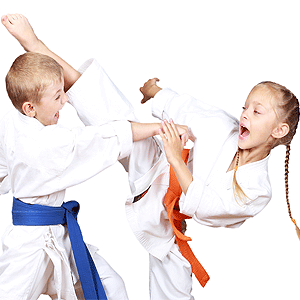
Words such as "kata" and "sensei" might sound really strange and even evoke suspicion, especially when they go together with all sorts of strange yells and yelps…
But if your youngster dreams of being the next Jackie Chan, relax – experts are unanimous karate is excellent for your child's development on all sorts of levels.
Occupational therapist Betsie Vlok would encourage every mother to let her kids take karate lessons. She has spent more than two decades working with children with learning difficulties and motor-skill deficiencies and her advice is simple: enrol the child in karate classes.
"Karate improves concentration, coordination, balance, posture, perseverance, memory and listening skills," she says.
Read: Fit kids are smart kids
The sport also exercises all the muscles of the body especially those that enhance your balance and stability. It's comparable to swimming, tennis and gymnastics, according to Vlok.
Karate isn't just physically advantageous; it has psychological and emotional value too. It teaches children "inner strength and self-confidence, discipline and preparedness", says Michael Kliment, an instructor in Shotokan, one of the many forms of karate.
It's the discipline of the sport that works miracles for children and their parents. "We're losing the battle to keep discipline at school, and karate can bring it back," Kliment says.
Marco Kavalieratos, a Chinese martial arts instructor, agrees the sport is an excellent way to teach children discipline. Remember how many times Mr Han made Dre hang up and take down his jacket in the movie?
Karate teaches kids a strong sense of self-worth and humility and helps them to handle aggression in a healthy way, Kavalieratos says.
Who would know better than legendary Jackie Chan himself? "Kung fu is a wonderful way for people to acquire respect and discipline, learn how to focus and empower themselves," he says.
Is it kung fu or karate?
If you’re looking at signing up your kid for a martial-arts programme, you may be wondering how kung fu differs from karate.
Kung fu is much older and karate developed from it as did tae kwon do and judo, Vlok explains.
Although kung fu and karate look different, the principles are the same. Kung fu is just rounder and softer. It comprises elegant dance movements and the imitation of animals. Karate, on the other hand, is characterised by choppy, linear movements.
Just as there are various martial arts, so there are different forms of karate. Shotokan is one of these. The differences have developed as a result of various techniques passed down through different families, philosophies, living conditions and methods.
Exercises and skills
Wondering what your child will be taught? Here’s a brief summary of some of the exercises – and skills – your child will pick up if he signs up for karate:
1. Push-ups
This exercise builds upper- body strength. In karate, push-ups are done on the fists in order to strengthen the wrists and knuckles. They also strengthen the lower back as you have to keep your body perfectly straight.
2. Jack-knife stretch
Abdominal and core muscles become stronger with this exercise. By improving core strength you also improve overall body strength and kicking. Strong abdominal muscles also make it easier to absorb blows to the stomach.
3. Basic stretch
Karate involves a lot of stretching as suppleness is key. Some stretching exercises focus on the waist, while this exercise stretches the inner-thigh muscles.
4. Mae Keage (front kick)
This basic kick improves suppleness and strength. As your child advances through the gradings, this kick will be done higher and faster. This technique isn't usually employed in fights but it can be adapted by doing it in a circle or landing a kick on someone from above.
5. Gedan Barai (downward block)
The left hand is directly above the knee and the right hand is held by the side. This basic downward block protects the stomach and groin. It’s one of four basic blocking moves that protect various parts of the body. Because the blocks are performed in all four directions, they’re particularly good for helping a young child develop coordination and improve concentration. Occupational therapists recommend this exercise because it crosses the midline.
When should they start?
Children are ready for karate between the ages of five and six but a four-year-old who is mentally well developed can also learn it “chop chop”. The movements of kung fu are more complex and would suit a slightly older child, of eight or nine years of age.
Read more:
Genes determine which exercise is best
The real benefits of exercising
Extreme exercising can lead to blood poisoning
Image: Protecting from an attack blow by hand from Shutterstock




 Publications
Publications
 Partners
Partners










